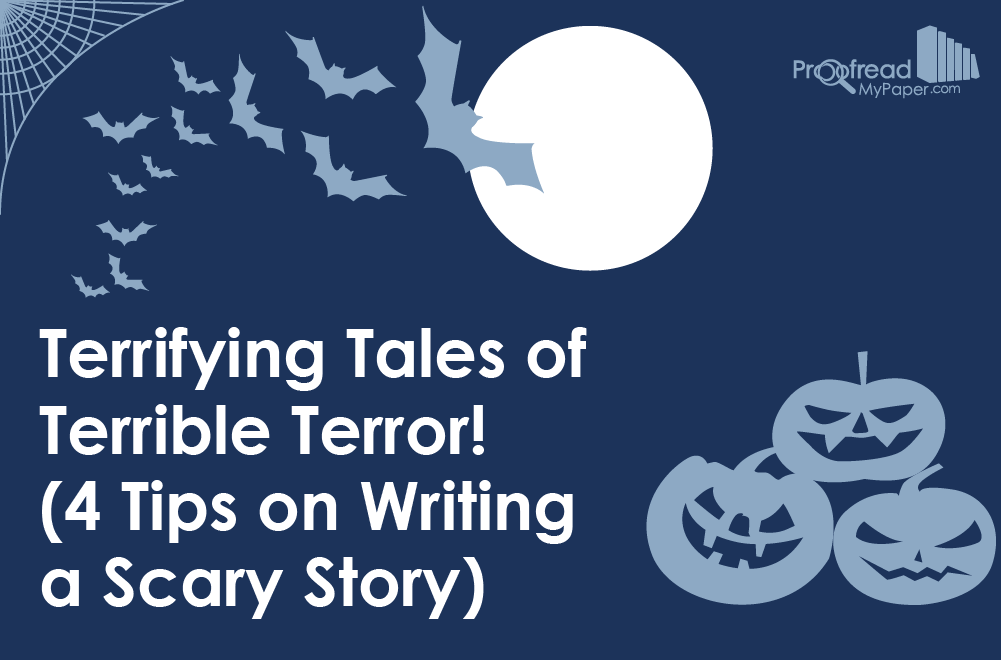If you’re too old for trick or treating but want to have fun on Halloween, trading ghost stories with friends is a great alternative (it’s also how Mary Shelley came up with Frankenstein).
But what if you and your friends are all too brave for old yarns about ghosts and ghouls to rattle you? Well, you could invent a scary story to set spines tingling using these (terrifying) writing tips.
1. Not Peanut Butter! Anything but Peanut Butter!
We’re all scared of something, whether it’s the dark, giant spiders or getting peanut butter stuck to the tops of our mouths. (We’ll confess that the last of those is quite niche.)
A good place to start with a scary story is therefore your own fears and anxieties, since it’s far easier to find the dark corners of a situation when it’s based on something personal.
2. Don’t Panic, Guys, It’s Just a Kitten. What? No! Get Off Me! AAAAARGH!
Another possibility is to make something familiar from everyday life threatening. Examples include Alfred Hitchcock’s The Birds and roughly 75% of Stephen King’s written output.
Try considering things in your environment that you usually take for granted, then use “what if?” style questions to come up with a situation in which they suddenly become deadly!
3. We’re Trapped!
One very effective way of adding tension to a story is to trap your characters somehow, such as being locked in a haunted building or lost in a forest with something that is hunting them.
Alternatively, you could “trap” your characters by stripping them of something they rely on.
Being chased by a serial killer? It’d be a terrible shame if your phone didn’t work and you couldn’t call for help. Something wicked lurking in the shadows? I’m sure you’ll be fine as long as the lights don’t go out…
Find this useful?
Subscribe to our newsletter and get writing tips from our editors straight to your inbox.
Oops. Should have changed that bulb before opening a portal to the dark realms, shouldn’t you?
4. WE’RE ALL GONNA DIE!
An important aspect of telling a scary story – and storytelling in general – is “show, don’t tell.”
This means that you shouldn’t be too direct, like openly stating that a character is scared:
“Upon feeling the peanut butter on the top of his mouth, Duncan started to panic.”
Instead, you should try to bring situations to life by describing them as they are experienced by the characters:
“Duncan bit into the sandwich and immediately froze. A bead of sweat ran down his forehead as he felt the sticky, nutty evil spread through his mouth…”
Telling the story this way can also make your characters seem more real, thereby encouraging your audience to care about them and what they’re feeling. Get this right and you should have a scary story that will haunt the dreams of even the bravest reader!
